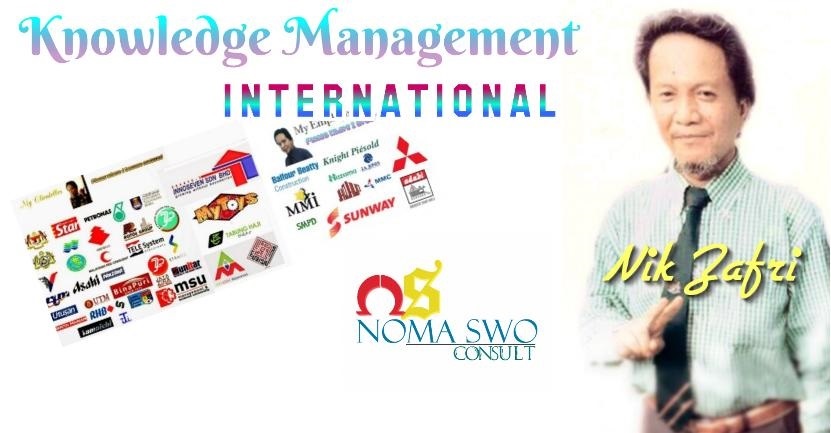
A landslide caused by heavy rains hit an orphanage in Malaysia on Saturday, killing two children and burying at least 21 others (Rumah Anak Yatim Hidayah Madrasah At Taqwa)
I laud both Federal Government and State Government for taking prompt actions such as providing temporary shelters for the needy, sending officers from fire department and the police. Not forgetting donations start pouring as I speak.
As a Muslim, I like to dedidate "Al-Fatihah" to them.
-------------------
After so many years, once again, the "blaming + fire-fighting" culture come into the picture.
A tabloid reported that the orphanage building has never been given an approval.**
This is not the issue. The real issue is :
How come the building has been there for quite some time and only now records show that there has never been an approval?**
How about continual monitoring and make professional recommendations BEFORE it happened?
And nobody is caring or professional enough to protect the slope? (aaa, a tender is required for that..cool...make money otherwise no protection)
After the incident happen, everyone try to become "Geotechnical Engineers" talking about soil and slope paramenters - the funny thing is that 'the so-called technical guys' are only considering soil conditions, no saying about slope gradient, applied load, hydraulic impact, shear and other factors. Leave it to JKR please.
So if these factors are taken into account, how much will it cost? How long will it take? Will the building be declared safe and they can return to the building? (most likely not)
A question; on the first place; the contractor paid from his own pocket to build the orphanage house? No site investigation? No soil test?
I wonder who approve this structure right under the nose of the authorities?**
Again - we wait for something to happen first, then we act.
Although one relevant Ministry instructed to provide immediate assistance to the orphans and family of the victims but there has been a statement being made before that that the Orphanage is not registered with welfare department.
Please...so nobody took action before this incident happen to alert them that we can't provide assistance if you're not registered?
Rumah Anak-anak Yatim dan Anak-anak Hidayah Madrasah Al-Taqwa is not a political issue, this is about young orphans requiring a home and someone is good enough to shelter it for them.
Unless it is a political issue; which I do not know of; then that's a different story. Some people may not want to give even a sen of donation because they are not supporting a certain political party. (I have been giving them donations quietly as well...not to show off but it's because it's based on humanitarian grounds not about political or religious sects)
Then, where do we go? Blame it on heavy downpour!
As 'the then' VVIP said : "God's Act". Fine..blame it on the Creator then..Some people make no sense.
The facts :
For those who are used to the area, just check what's going on on the top of the nearby hill and adjacent areas.
Landslides may be triggered by rains, floods, earthquakes, and other natural causes but it can also be caused by "human-made causes" - such as grading, terrain cutting and filling, excessive development, etc. 
Trust me, I don't have to become an engineer to know all these things, it can happen in developed areas, undeveloped areas, or any area where the terrain was altered for roads, houses, utilities, buildings, and even for lawns in one's backyard.
Take also into account some illegal quarrying and illegal logging activities as well..I'm not blaming/pinpointing anyone but as they say "just in case"
-------------------------------
**
Someone sms me to look into another statement that The orphanage was built about 15 years ago and at that time or now, it was NOT COMPULSORY for them to meet requirements set by JKR. It means that 2011-15 = 1996
What happen then?
30.06.1995 Genting Sempah, SELANGOR
24.09.1995 Taman Bukit Teratai, Ampang, SELANGOR
02.05.1994 Puchong Perdana, SELANGOR
Source : http://www.box.net/shared/g5ft6tgix9 which is also a good National Slope Plan than can be elaborated further and apply to this case.
Let's rewind a lil bit further:
The Highland Towers (SELANGOR) collapse was an apartment building collapse that occurred on 11 December 1993
Guidelines on technical and safety aspects 15/12/1993 MM
GUIDELINES on technical and safety aspects of highrise building construction in hill slopes in Selangor will be issued to developers in two days.
The guidelines, formulated by a high-level committee formed by the Selangor Government to check construction of high-rises in hilly areas has defined a building above five-storey as a high-rise building.
(I'm not talking about highrise, I'm talking about "hilly areas" and "slope protection")
Yes, people tell me that this is the PREVIOUS Selangor Government. Wow...so the current one has NO jurisdiction.
So why can't there be a uniformity on guidelines like this?
Another person came and said : "It is out of our operational zone and should come under the Rural and Regional Development Ministry"
Ok fine..so what's next?
Let's be proactive from now on and not reactive. Let's stop the blaming culture from now on. Enough is enough.






















